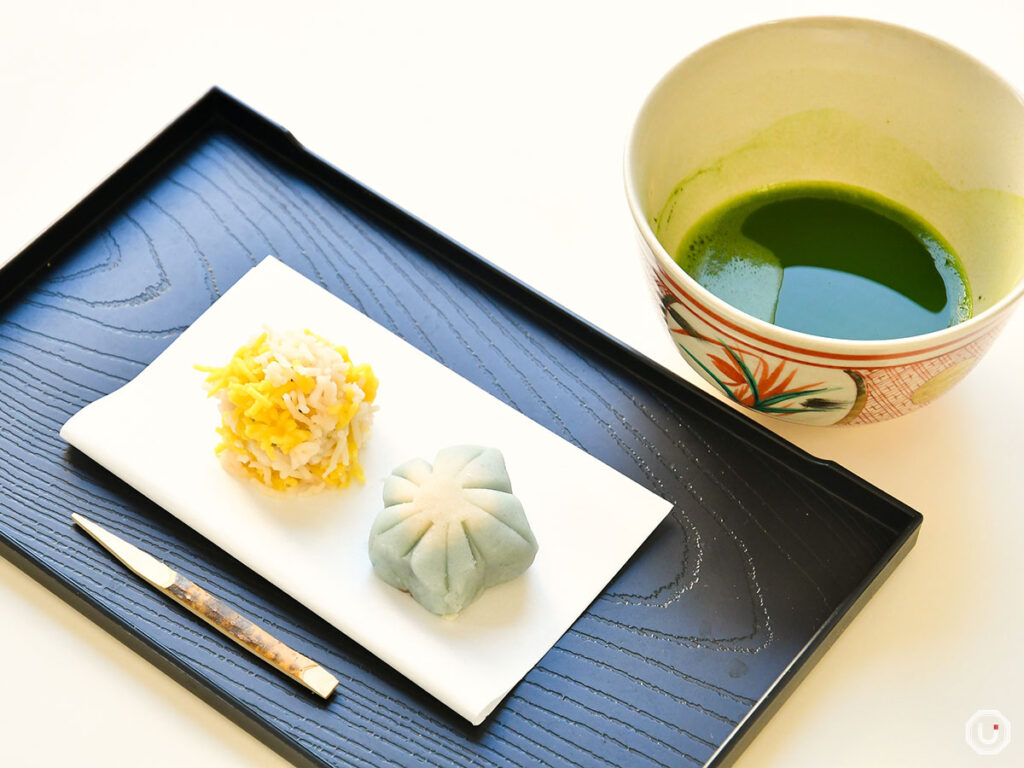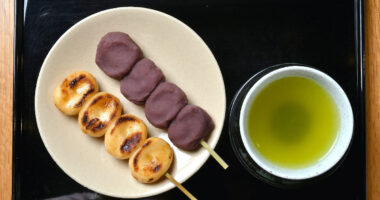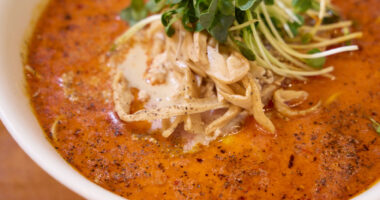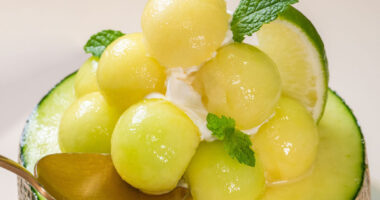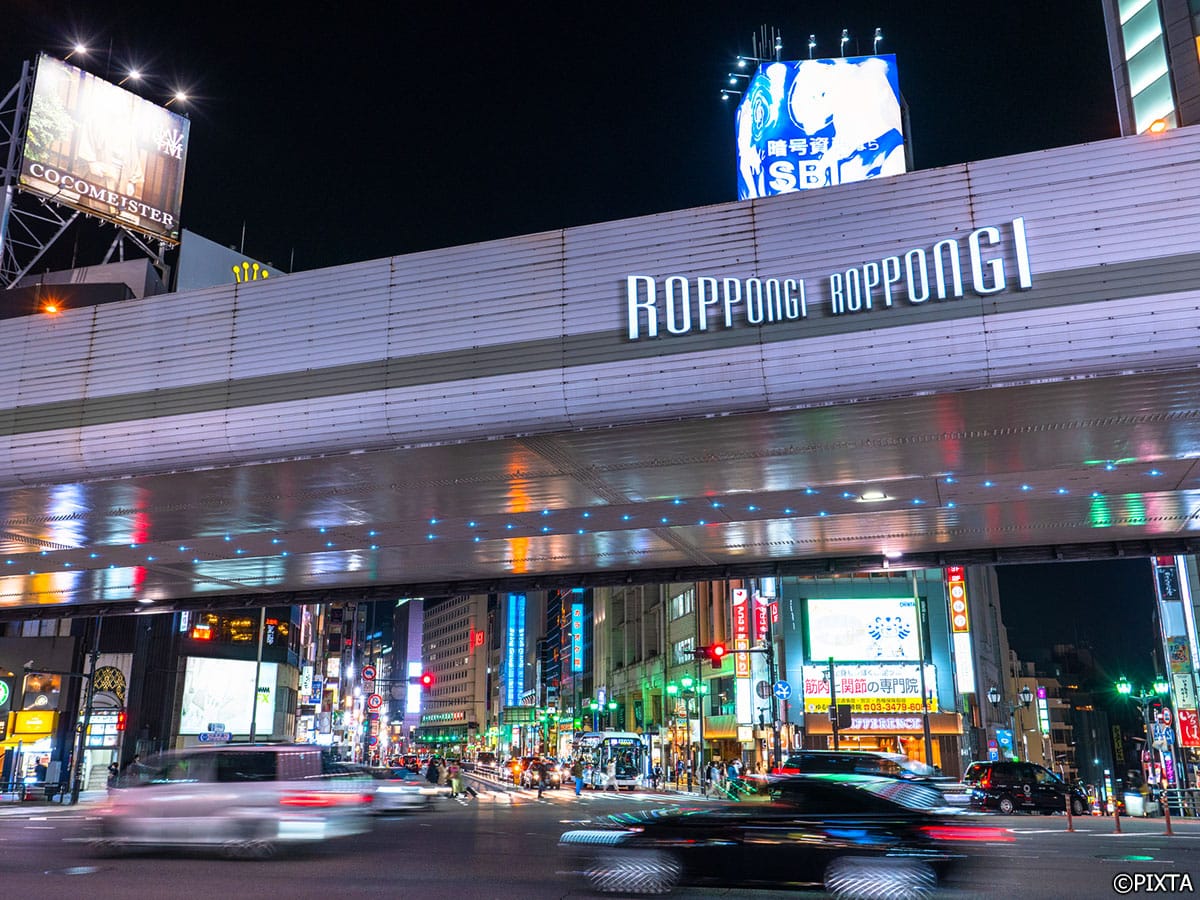Among wagashi (traditional Japanese sweets), few are as refined and beautiful as jōnamagashi (premium wagashi).
These seasonal sweets, crafted to reflect Japan’s scenery and flowers, are truly worthy of the title “edible works of art.”
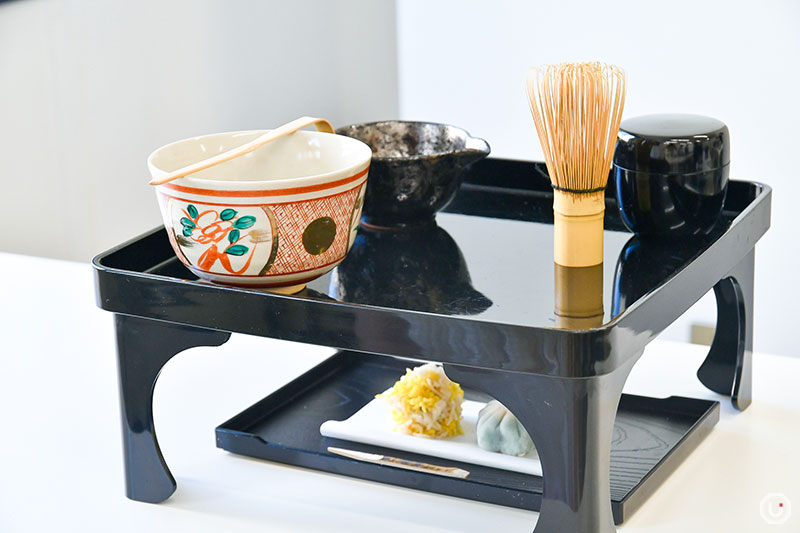
At “AN TOKYO Japanese Culture Experience,” you can not only try your hand at making jonamagashi but also experience a traditional matcha tea ceremony in a beginner-friendly workshop.
It’s a chance to see, touch, and taste Japanese traditions—a truly special experience.
Start by booking! Choose from 5 different courses
At AN TOKYO Japanese Culture Experience, there are five hands-on courses centered around Japanese sweets and matcha.
This time, we chose the “Japanese Traditional Sweets making and Tea Ceremony (2 kinds of experiences)” which combines jōnamagashi making with a tea ceremony.
The session lasts about 1 hour and 35 minutes, and costs 2,800 yen (tax included).
Other Courses
- Japanese Traditional Sweets making: 1 hr 5 min / 1,760 JPY (tax included)
- Tea Ceremony Experience: 30 min / 1,160 JPY (tax included)
- Japanese dried-type Sweets (Ohigashi) making: 30 min / 1,660 JPY (tax included)
- 2 types of Japanese Sweets making and Tea Ceremony (3 kinds of experiences): 2 hr 5 min / 4,360 JPY (tax included)
All courses require advance reservation, which can easily be done through the website.
There’s also an English-language page available, so overseas guests can book with confidence.
Payment is completed in advance by credit card or bank transfer.
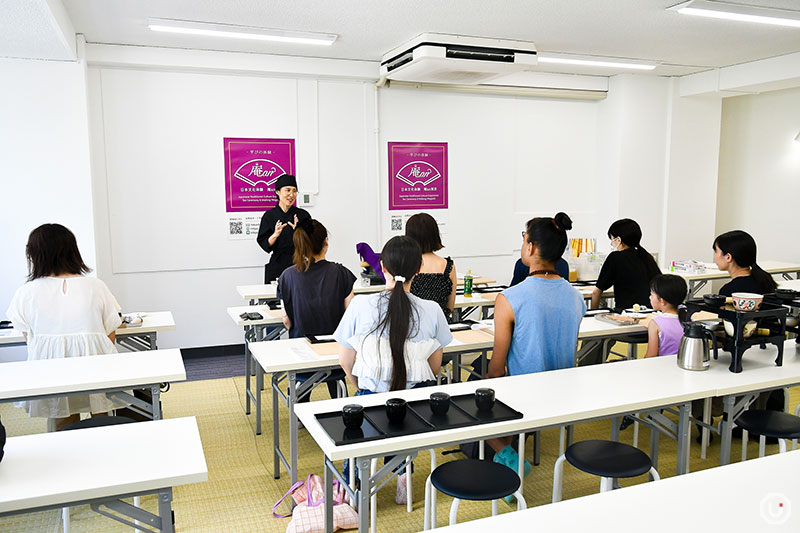
Interior of the AN TOKYO Japanese Culture Experience classroom
Conveniently located just one minute from Kanda Station
The facility is on the 3rd floor of the Daini Toei Building in Kanda, Tokyo.
It’s just a 1-minute walk from Kanda Station’s East Exit (JR Yamanote Line, JR Keihin-Tohoku Line, and JR Chūō Line Rapid) or Exit 1 of the Tokyo Metro Ginza Line—making it very easy to access.
Take the elevator to the 3rd floor, remove your shoes at the entrance, and step into a modern room with Japanese touches.
Try your hand at wagashi making – seasonal designs to enjoy
The stars of this session were two jonamagashi sweets with an autumn theme: Kikyō (balloon flower) and Inaho (ears of rice).
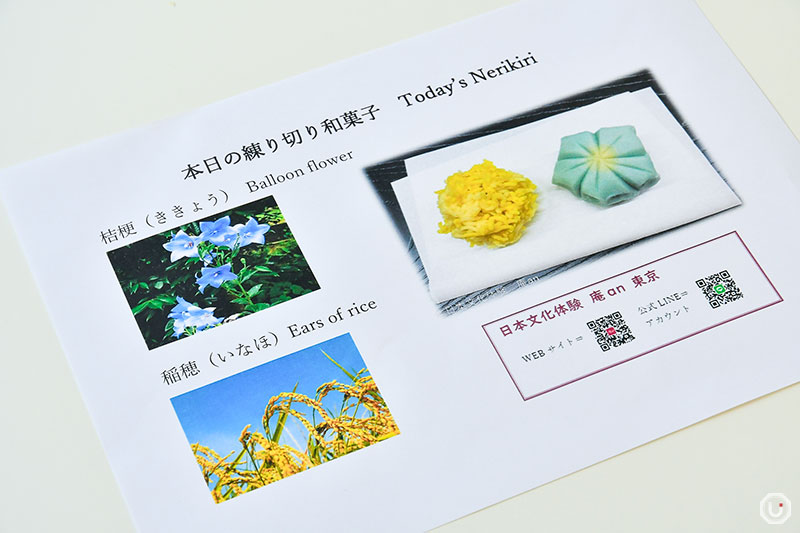
Information sheet for the wagashi we made in this session
The wagashi motifs change roughly every two weeks to match the nijūshi sekki (the 24 solar terms), and you can check the designs on the official website when booking.
Depending on the season, you might find chestnuts or autumn leaves as motifs, or even playful winter designs like Santa Claus. That touch of creativity within tradition is part of the charm of this experience.
Starting with the ingredients and tools
For this session, we used shiro-an (white bean paste made from kidney beans) and kuro-an (red bean paste made from azuki beans).
Both are carefully sourced from a long-established wagashi shop in Kyoto.
The tools provided here are the same ones that professional wagashi artisans actually use.

All tools are provided by AN TOKYO Japanese Culture Experience
The first sweet we made was the Kikyo. Shiro-an was mixed with a natural plant-based pigment (gardenia fruit) to create a vivid blue color.
Gardenia pigments can produce blue, red, and yellow tones through chemical reactions—an intriguing detail we learned along the way.
Knead, fold, knead again—the process itself gradually draws you into focus and concentration.
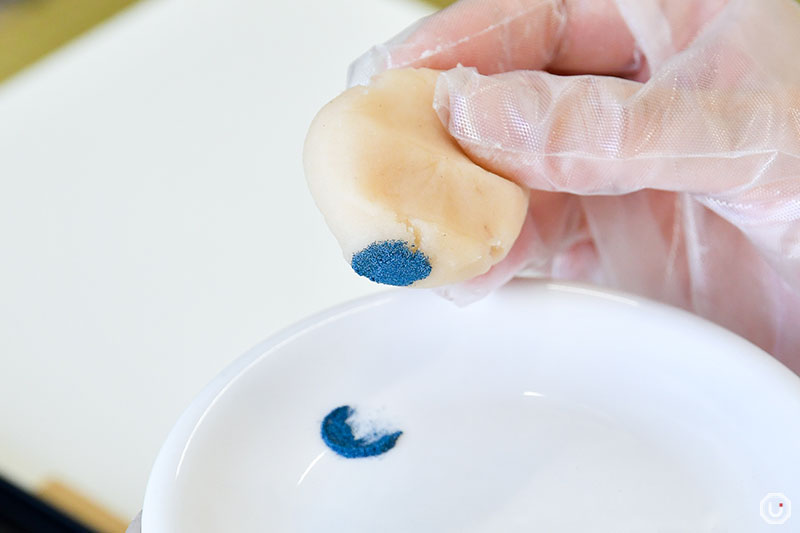
Coloring the white bean paste
Take on a wagashi challenge! Mastering hōan and the blurring techniques
Next came the process called hōan (wrapping), where the red bean paste is enclosed in the colored white bean paste.
The tricky part is rolling it out thinly and evenly—a step that’s much harder than it looks.
According to the instructor, even professional artisans take one to two years to fully master this technique.
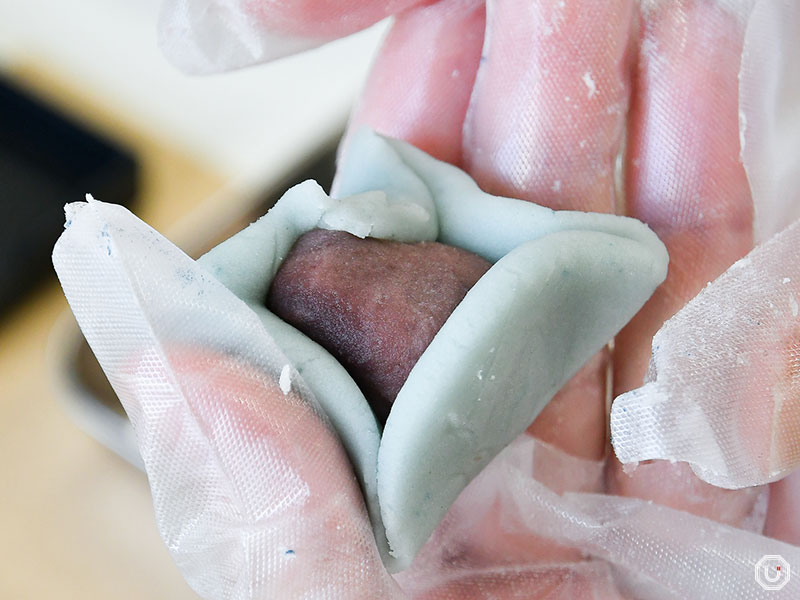
The hoan (wrapping) process
Once wrapped, the next step is called hari-bokashi, where a thin layer of white bean paste is placed on the surface and blended in.
By gently tapping with your index finger, you create a natural gradation of color.
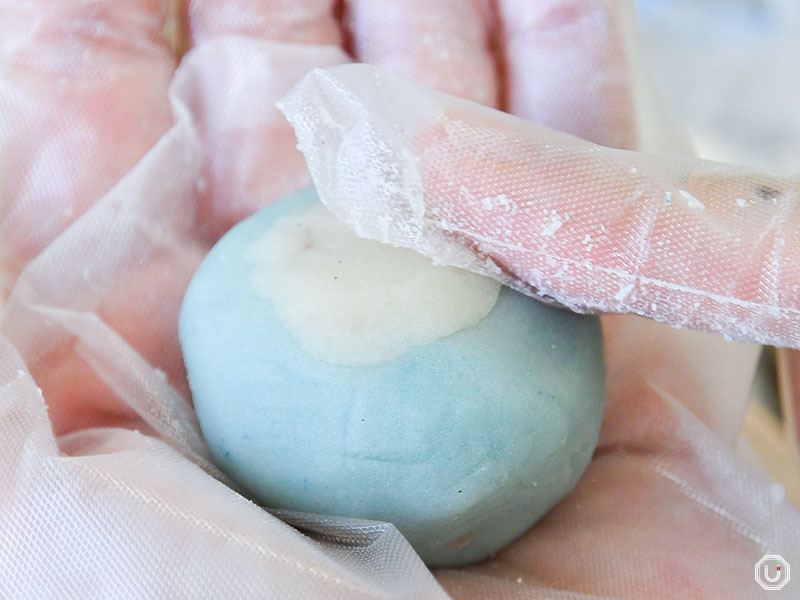
The hari-bokashi blending technique
Finally, lines are carved with a sankaku-bō (a triangular, wooden bar), and the tips of the petals are sharpened—completing the Kikyo wagashi!
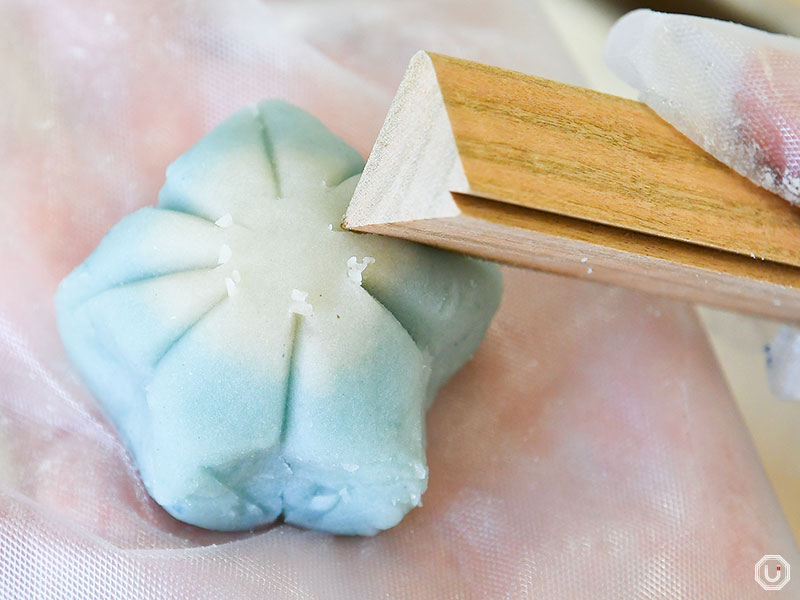
Adding final petal lines with a sankaku-bo
Next up: Inaho – getting the color and texture just right
The second wagashi creation is Inaho, a symbol of autumn in Japan.
White bean paste and yellow-colored bean paste are each pressed through a slotted spoon with your thumb to form fine crumbles.
Watching these traditional wagashi-making techniques firsthand is part of what makes this experience so special.
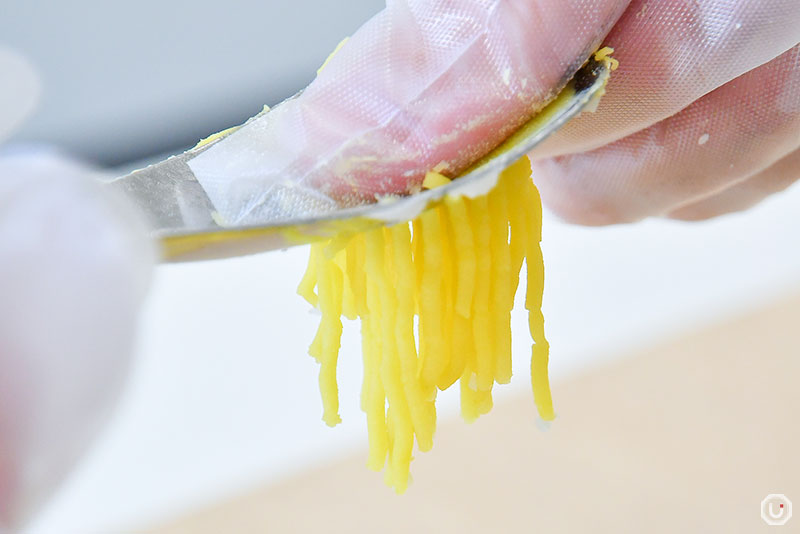
Pressing the bean paste into crumbles
Next, the crumbled paste is gently attached to the red bean paste filling using chopsticks.
By balancing the white and yellow pieces, the rice ear gradually takes shape. Too much pressure will crush the delicate texture, so the key is a light, careful touch.
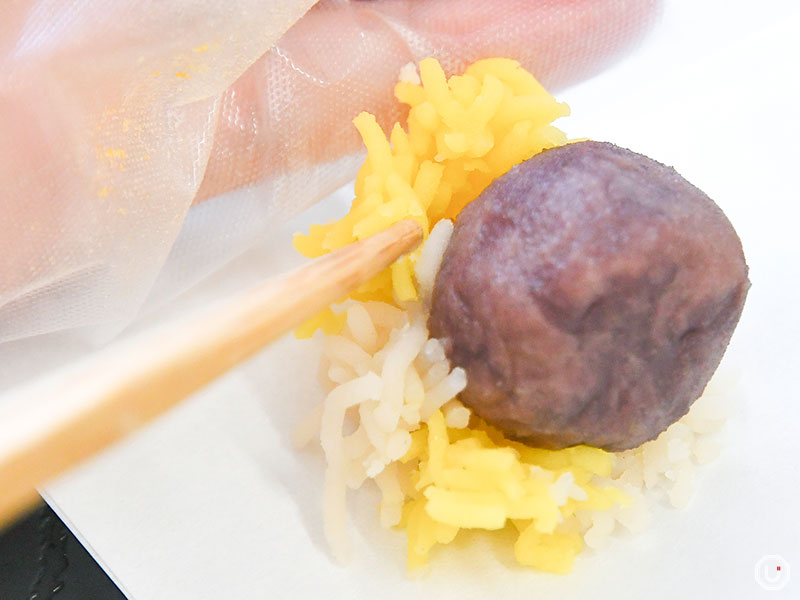
Attaching the crumbled paste onto the red bean filling
The moment both sweets are finished is sure to bring a smile to your face.
Some steps were challenging, but thanks to the instructor’s clear guidance, the process was smooth and enjoyable from start to finish.
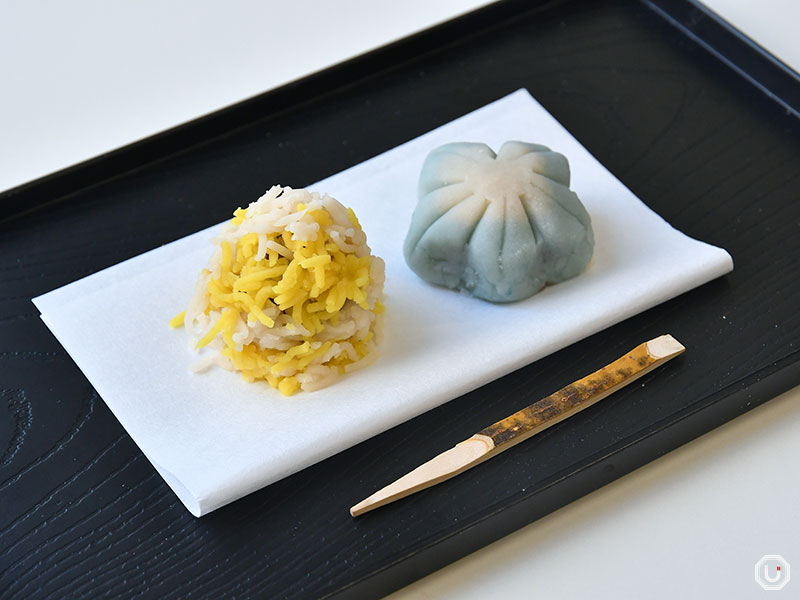
(Left) Inaho (Right) Kikyo
The second half: experiencing matcha preparation
After making the wagashi, we took a short break before moving on to the matcha experience. In tea ceremony terms, otemae refers to the process of preparing matcha according to proper etiquette, so that it is frothy and ready to drink.
During the class, participants learn the basics of the tea ceremony while whisking their own matcha by hand.
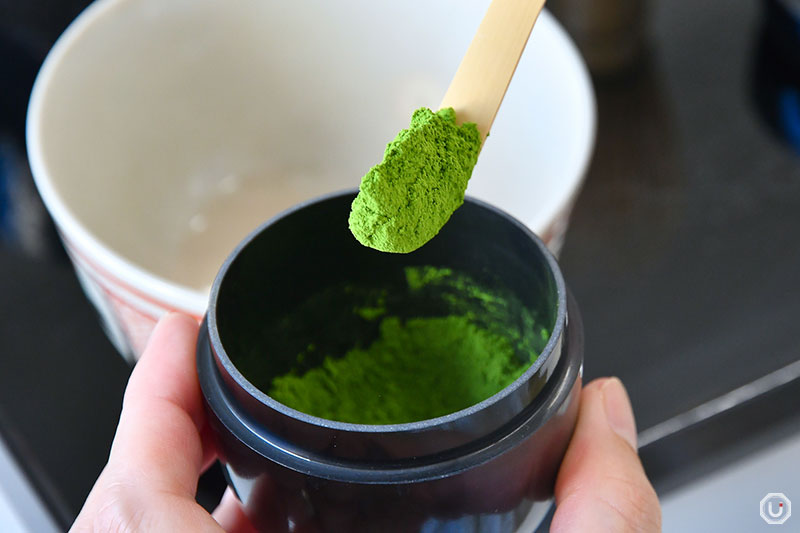
We started by identifying the front of the tea bowl. If it has a design, that side faces forward; if it is plain, the position of the stamp on the bottom is used.
It may seem like a small detail, but in the tea ceremony, every movement has meaning, which is fascinating.
Once the water was cooled to 80–90°C (176–194°F), it was added to the tea bowl along with the matcha powder.
Holding the chasen (bamboo whisk) with three fingers, we moved it up and down to create a frothy layer.
The whisking takes about 20 seconds. Though it looks simple, getting a perfect froth is surprisingly tricky—and that challenge makes it all the more enjoyable.
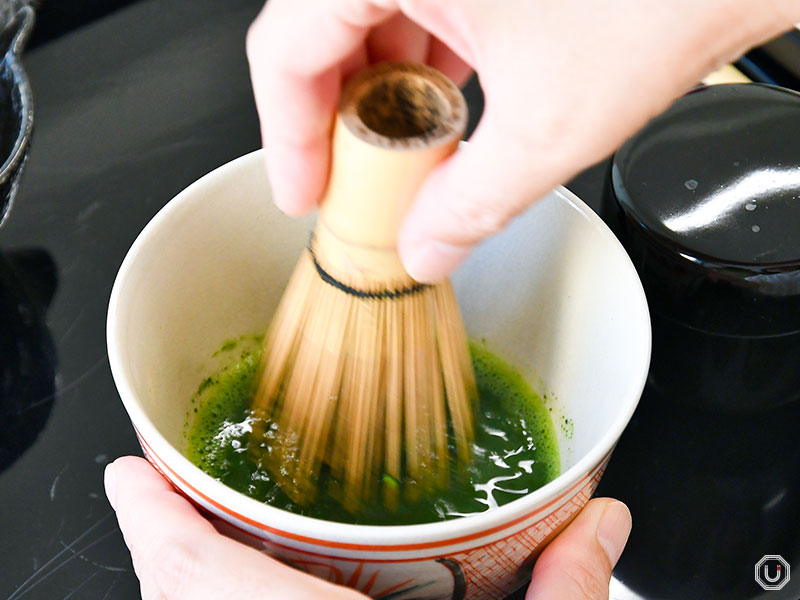
Whisking the matcha using a chasen
The proper way to drink matcha
Once the matcha was prepared, it was finally time to enjoy it.
Hold the tea bowl in your right hand, place your left hand underneath, and bow slightly. Before taking a sip, rotate the bowl clockwise twice—180 degrees in total. This practice comes from Japanese aesthetics, ensuring that you never sip from the most visually “perfect” front of the bowl.
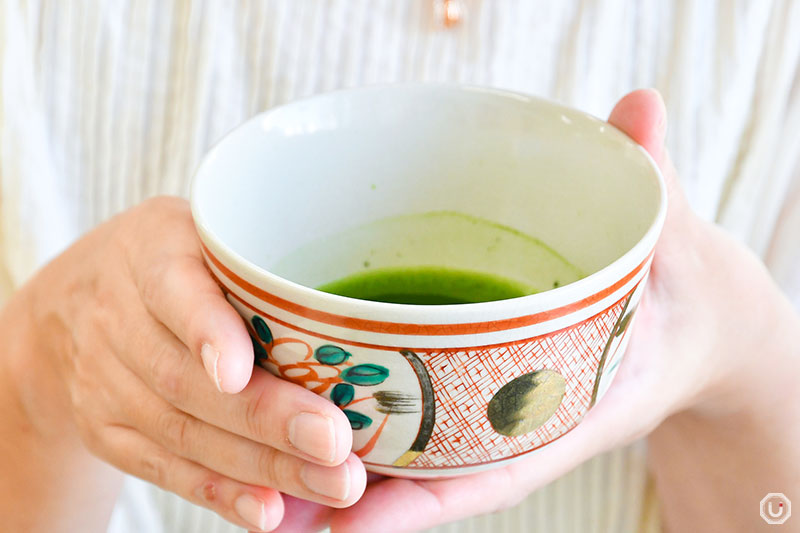
The class also teaches proper tea ceremony etiquette
Drink the tea in three or four sips, then gently wipe the rim with your fingers and the kaishi paper that held your wagashi, finishing the ritual.
Every movement has meaning, and the careful, deliberate gestures make the experience itself beautifully immersive.
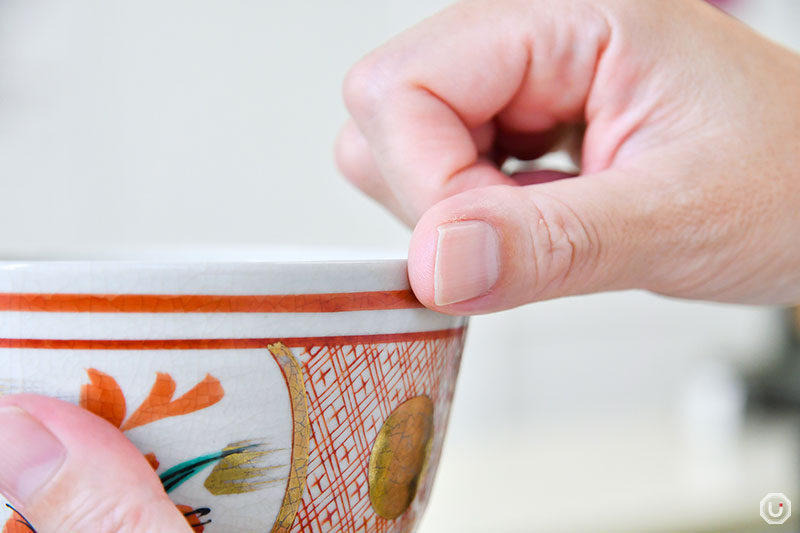
Wiping the rim of the bowl at the end of the ritual
English-speaking guests welcome: classes available in English
Instructors accommodate overseas participants as much as possible in English.
For those who want guaranteed English guidance, English instructions are also available during the class for 1 hour at 5,500, JPY with an additional 30 minutes costing 3,300 JPY. This option can be selected when booking.
A traveler from the UK who joined our session found the step of placing the crumbly bean paste on the black bean paste the most challenging.
However, seeing the completed wagashi brought a very satisfied smile to their face.
You can enjoy the wagashi with matcha on-site, or purchase takeaway containers for 100 JPY each (tax included) to bring some home as a souvenir—a perfect memento of your visit.
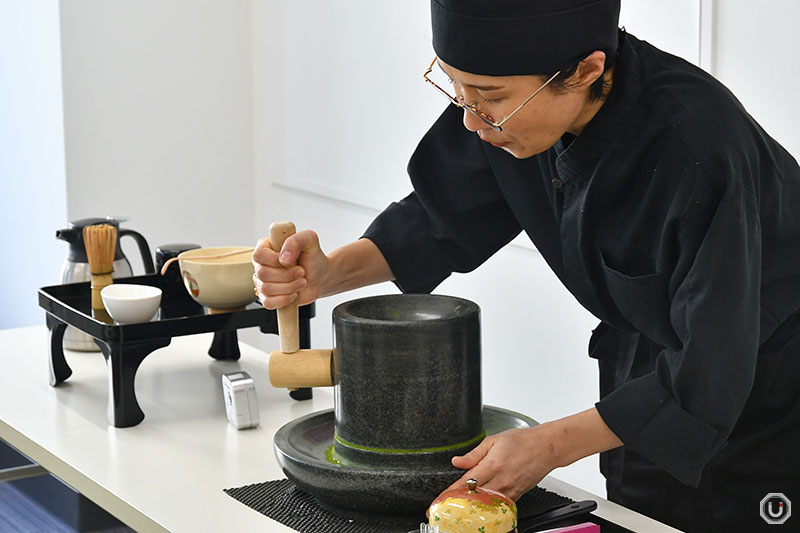
Guests can also watch instructors grind the tea leaves right in front of them
This experience captures the very essence of Japanese traditional culture through wagashi and matcha.
It’s not just the visual beauty—every aspect, from the flavors of the ingredients, the joy of making the sweets by hand, to the meaningful etiquette behind the tea ceremony, is filled with learning and wonder.
If you’re visiting Tokyo, why not take a little time to experience the refined beauty of Japanese tradition?
Information
| Facility name | 日本文化体験 庵an東京 AN TOKYO Japanese Culture Experience |
|---|---|
| Address | Daini Toei Building 3F, 2-2 Kajichō, Chiyoda-ku, Tokyo
|
| Access |
Kanda Station Short-walk from Kanda Station East Exit
Kanda Station Short-walk from Exit 1
|
| Phone number | Unlisted |
| Hours | 7:30-20:00 Reservations accepted from 10:00-17:00 |
| Closed | No fixed holidays Unscheduled holidays |
| Official website | https://tokyo.nipponbunkan.com/ |
| Other information | Luggage storage space is not available |
※All facility information is current as of September 2025.
